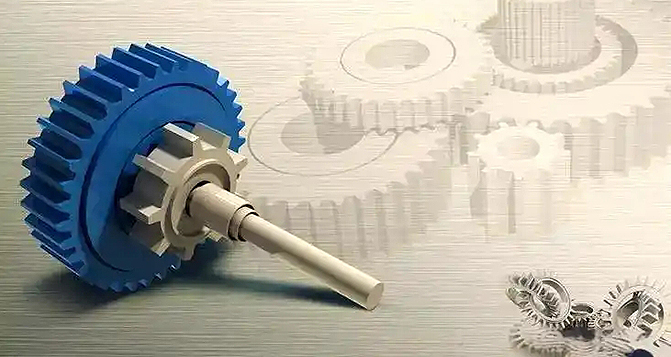Many people easily confuse hardness and stiffness, but in fact, they are two completely different concepts.
The difference between hardness and stiffness
Hardness is a characteristic of a material itself, which represents its ability to resist local deformation. For example, the HB or 2B pencils we usually use for exams refer to the hardness of the pencil lead. Materials with high hardness, such as diamonds, are difficult to scratch; Materials with low hardness, such as rubber putty, are easily deformed by compression.
Stiffness is a characteristic of a component that represents its ability to resist overall deformation. Imagine a bamboo and a utility pole. Bamboo is relatively thin and easy to bend; The utility pole is relatively thick and difficult to bend. The stiffness is not only related to the cross-sectional size of the material, but also to the length of the component and boundary conditions (such as whether the two ends are fixed or free).

hardness
Hardness is an important indicator for measuring the softness and hardness of metal materials. It represents the ability of a material to resist elastic deformation, plastic deformation, or failure, as well as its ability to resist residual deformation and anti failure. Hardness is not a simple physical concept, but a comprehensive reflection of mechanical properties such as elasticity, plasticity, strength, and toughness of materials.
There are many methods to measure hardness. Simply put, it is to use a hard indenter with a known shape to press the material, then unload it, and divide the maximum force by the area of the indentation to obtain the hardness. According to different indenter shapes and testing conditions, hardness testing can be divided into static pressure method (such as Brinell hardness, Rockwell hardness, Vickers hardness, etc.), scratch method (such as Mohs hardness), rebound method (such as Shore hardness), as well as various methods such as microhardness and high-temperature hardness.
stiffness
Stiffness refers to the ability of a component to resist elastic deformation under load. Simply put, it refers to the degree to which a component is not easily deformed when subjected to force. The stiffness depends on the geometric shape of the part (such as cross-sectional size, length) and the type of material (i.e. elastic modulus of the material).
In calculations, stiffness is usually represented by a matrix, which is the stiffness matrix. For materials, the stiffness matrix can be understood as the partial derivative of the stress tensor to the strain tensor, sometimes also known as the Jacobian matrix. During elastic deformation, the stiffness matrix can be directly calculated through modulus and Poisson's ratio; During elastic-plastic deformation, the situation becomes more complex and requires consideration of plastic strain and strain hardening.
strength
Strength refers to the ability of a component to resist fracture or residual deformation beyond allowable limits after being subjected to a load. Simply put, it is the ability of a component to resist failure. Strength is the fundamental requirement that mechanical components must first meet.
The strength of mechanical parts can be divided into many types, such as static strength, fatigue strength (including bending fatigue and contact fatigue, etc.), fracture strength, impact strength, high and low temperature strength, strength under corrosive conditions, creep, bonding strength, etc. The experimental research on strength is mainly conducted by studying the stress state of components to understand their stress situation and predict the conditions and timing of failure.

